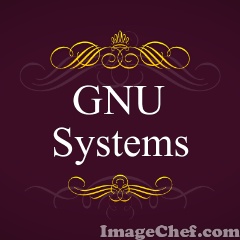Wave of Software Goes Free (Mostly GPL)
- Dr. Roy Schestowitz
- 2010-01-06 02:46:10 UTC
- Modified: 2010-01-06 02:46:10 UTC

Summary: GenoCAD, Ruckus, ShimBi Labs, and RawTherapee liberate some/all of the code, signaling the changing times
ANOTHER batch of projects ought to be proud; developers have just decided that it's better to be Free than to be non-Free. Today we have:
1.
GenoCAD Source Code Licensed to ISCB
This agreement will facilitate the open source development of GenoCAD by the synthetic biology community.
GenoCAD, which can be regarded as one of the first computer assisted design systems for synthetic DNA sequences, provides a sequence builder function that guides users through the process of designing a new genetic construct from a database of standard genetic parts. The open source development of GenoCAD is hosted on SourceForge.
2.
Ruckus Wireless open sources Zap wireless performance tool
Zap source code is hosted on Google Code and is released under the Simplified BSD License. A black paper from Ruckus Wireless called "Characterizing Wireless Network Performance" is available on request.
And now some GPL:
3.
ShimBi SeE MyBlog Version 1.0 Open Source Web 2.0 Blogging Software Released
Although it is Version 1.0 ShimBi Labs has been using beta version of this blog application since 3 years. Since then we work almost every month few hours on development side of it and finally in November 2009 it has been decided that we will release same application as open source application Under GPL license. SeE MyBlog is released as open source application Under GPL license.
4.
RawTherapee 3.0 alpha 1 and license changes
I decided to change the license to GPL and thus offer the source code to the open source community.
Over at The Source, Jason
writes about the value of Free software and explains why the origins matters:
I want to stress once again that originally back in 1998, the term “Open Source” was intended as a drop-in replacement for the term “Free Software”. I suggest you read that link because it makes 3 beautiful points:
1. The problem was “with the term ‘free software’, itself, not the concept”.
2. It was done in “pragmatic interest”
3. RMS “initially flirted” with the idea, but came to reject the term.
As time has passed and we look back I think it is very telling how things have played out.
[...]
The acknowledgment that RMS considered the terminology switch from “Free Software” to “Open Source”, but came to reject it shows remarkable foresight.
It is true indeed that the term “Open Source” may be easier for many business interests to adopt, but it also is much easier to dilute. If “Open Source” was intended to be synonymous with “Free Software”, where does that put “Shared Source”, “Open Core”, “Open Edge” and other such Fauxpen Source pretenders?
I see a fundamental ironic difference between the way RMS considers things and they way his most vocal detractors consider things. RMS sees that user freedom represents a challenge to corporate interests, and so most of them will try to find a loop hole or substitute. This is a sad, but realistic understanding. Contrast this with the loudest anti-Free Software proponents who have a wholly unrealistic expectation: that companies will not twist, distort and undermine user freedom at every turn.
Groklaw has just published
this explanation and praise of the GPL:
Some imagine that it's unthinkable to, as they view it, give away valuable IP for nothing. But, first, it's not giving it away, and second, it's not for nothing. Nor does pooling your code put you out of business. The diagram shows a barter process. This is the key word, because such contributions of code are compensated, but the consideration is not money. It is code. You give a little code, and you get back a lot more.
When people receive back a complete Linux, they have the source code. It lets them make changes and adjustments to suit their purposes more exactly, and then they can contribute those modifications back to the project and all the contributions are then able to be integrated into the project. This ball keeps rolling, and getting bigger, and Linux keeps improving. People contribute because they want Linux to be available and to improve.
There's a fairness to it, which is why it is the most popular FOSS license. And there is a purpose, to make a large body of code available that anyone can improve and enjoy. People build businesses around Linux. Google did. Amazon too. It's great for startups, as Mark Shuttleworth has explained. He built a profitable business, Thawte, using FOSS code.
The GPL keeps thriving and resistance to it is often an indication of its success, as long as this resistance comes from those who are competing against it (notably Microsoft).
⬆
